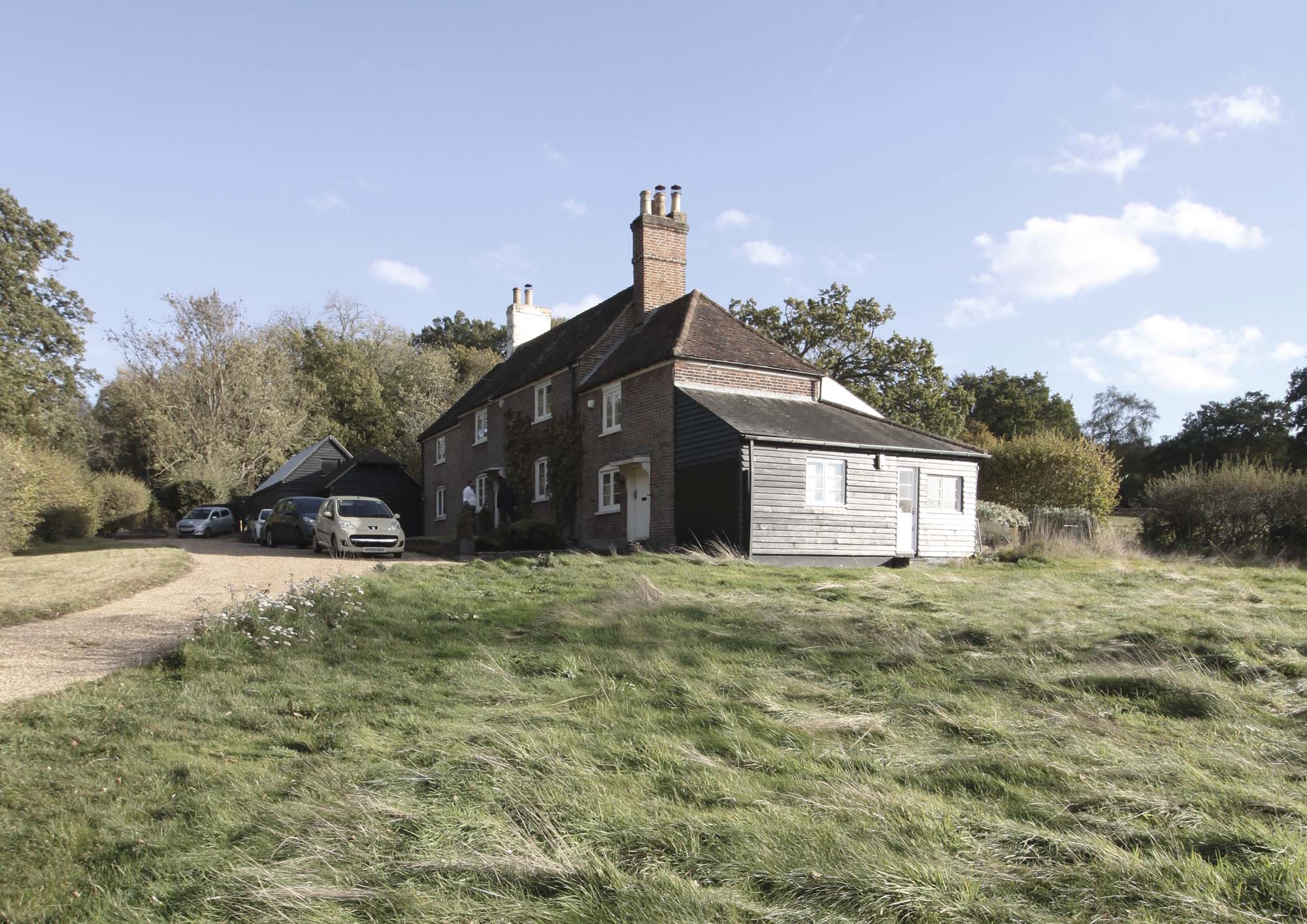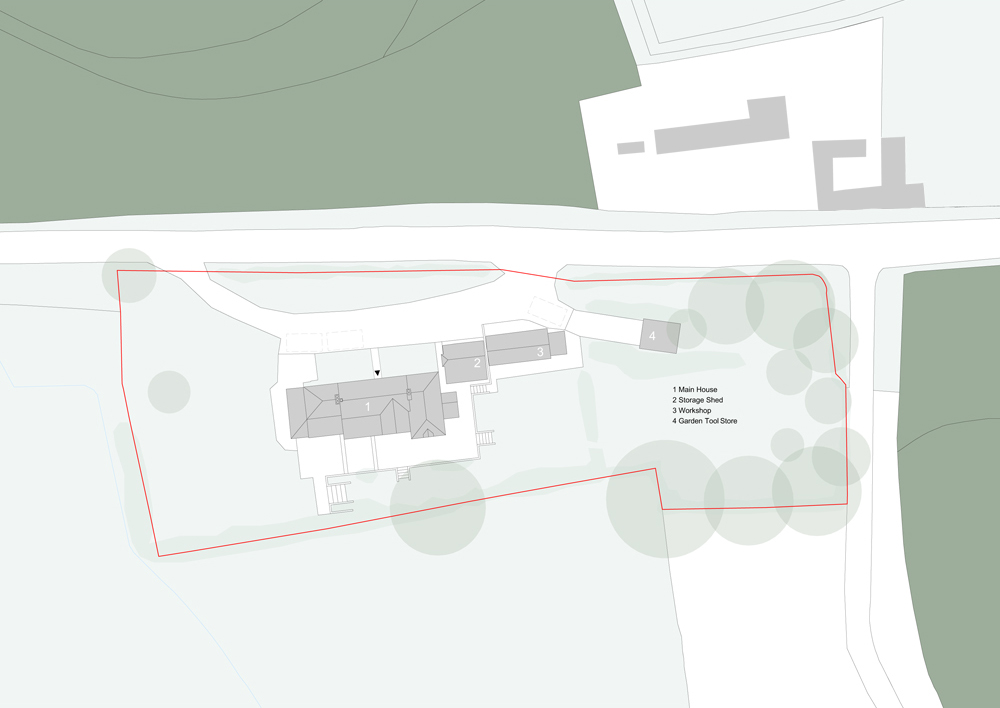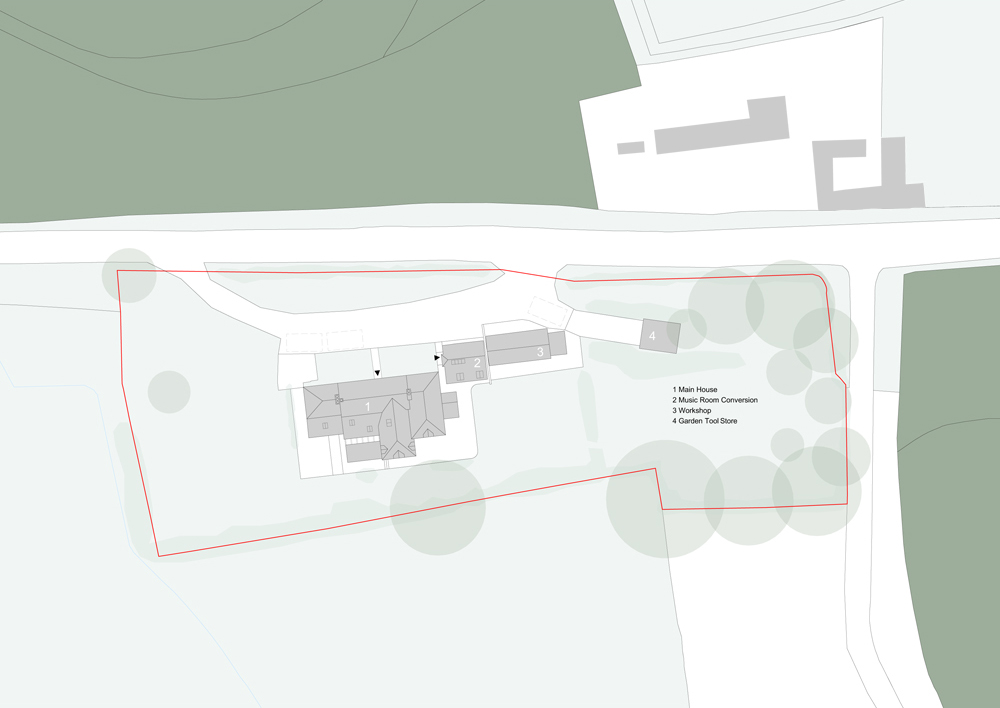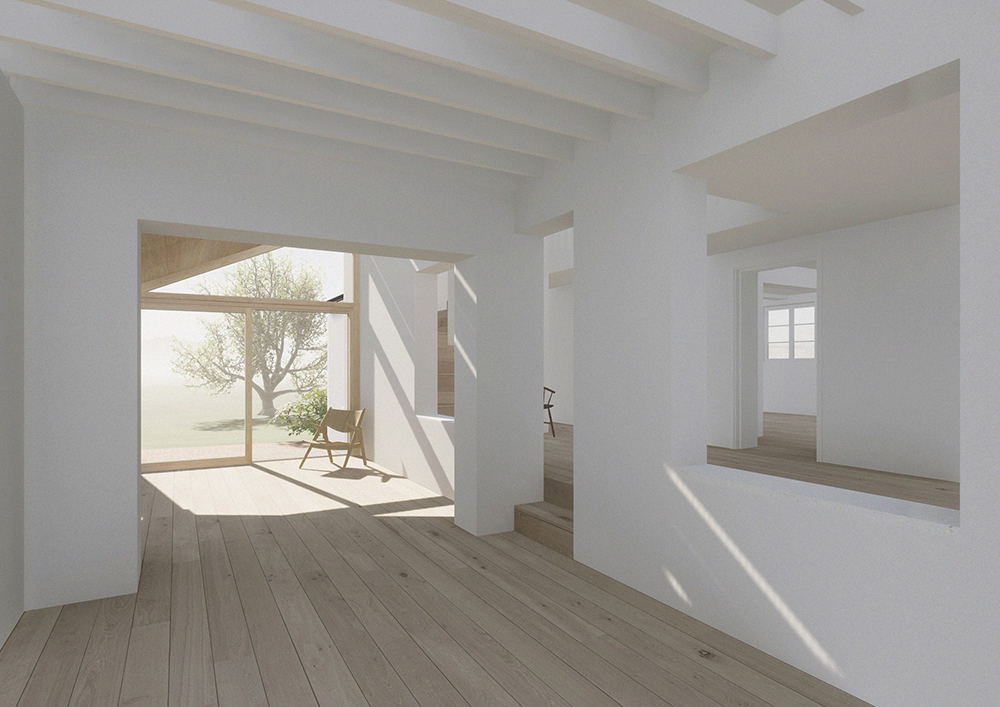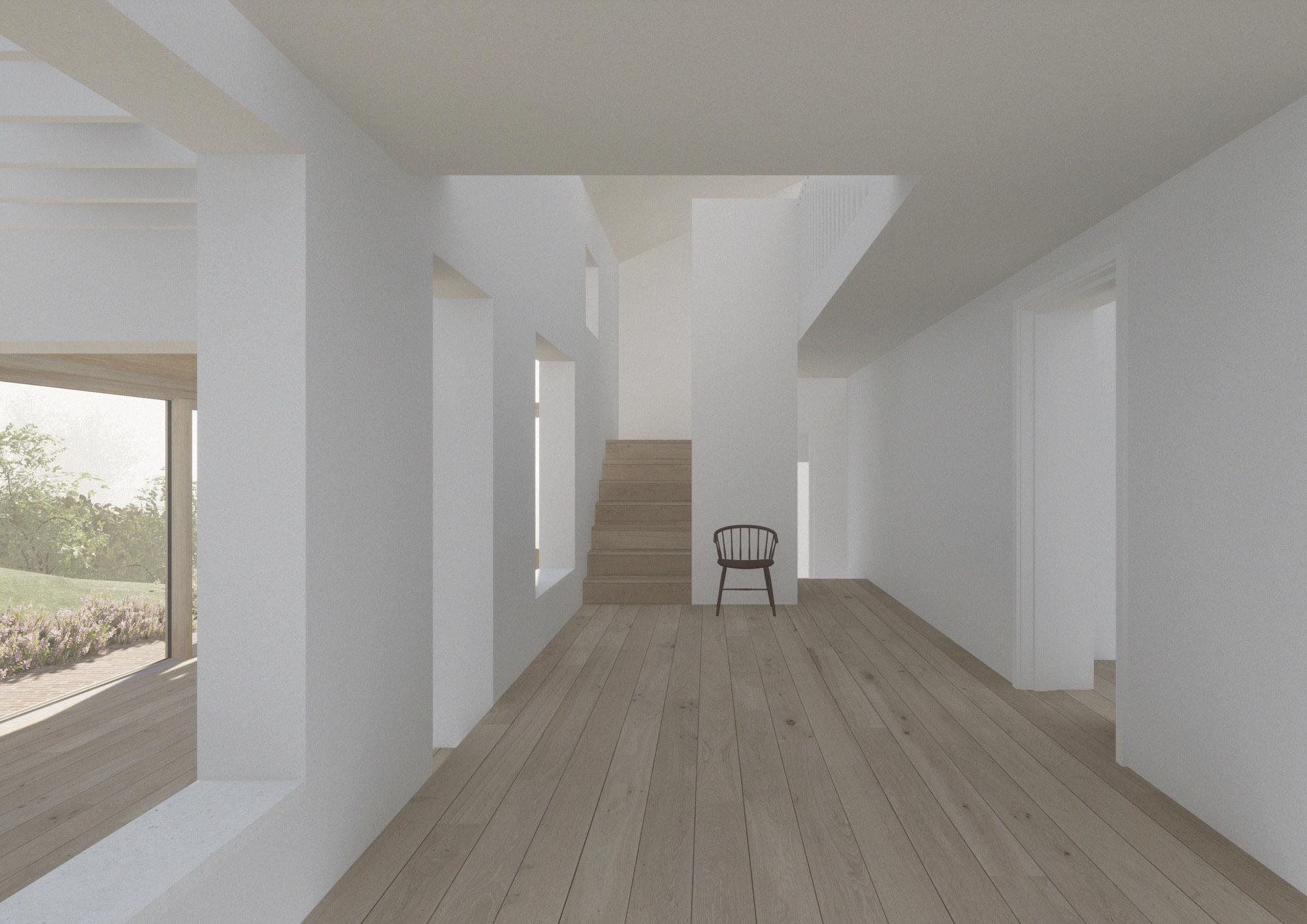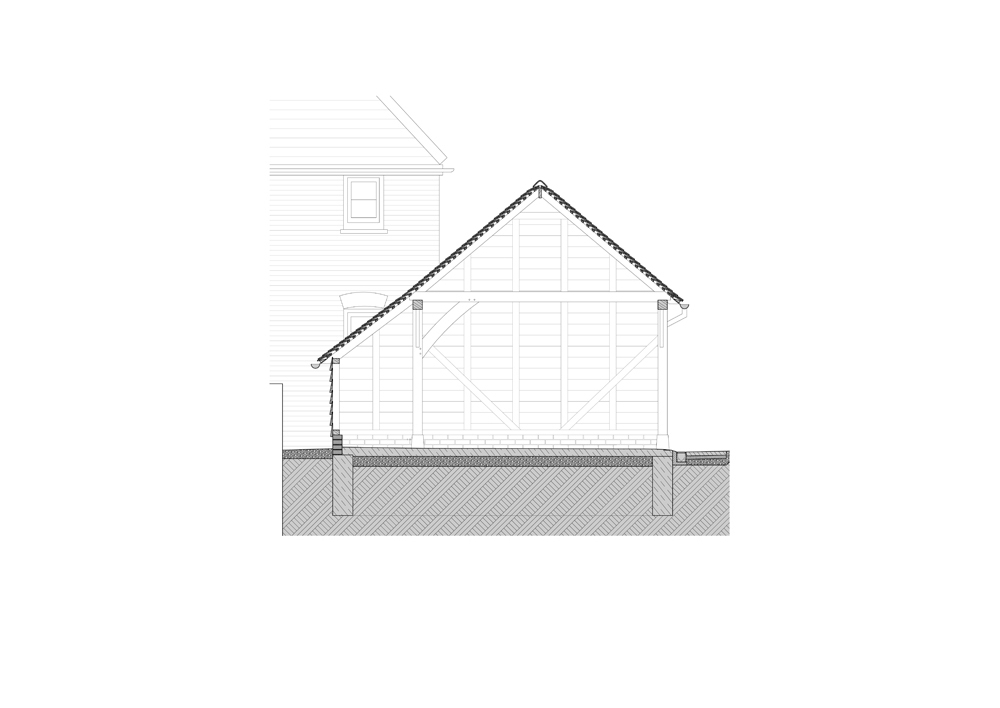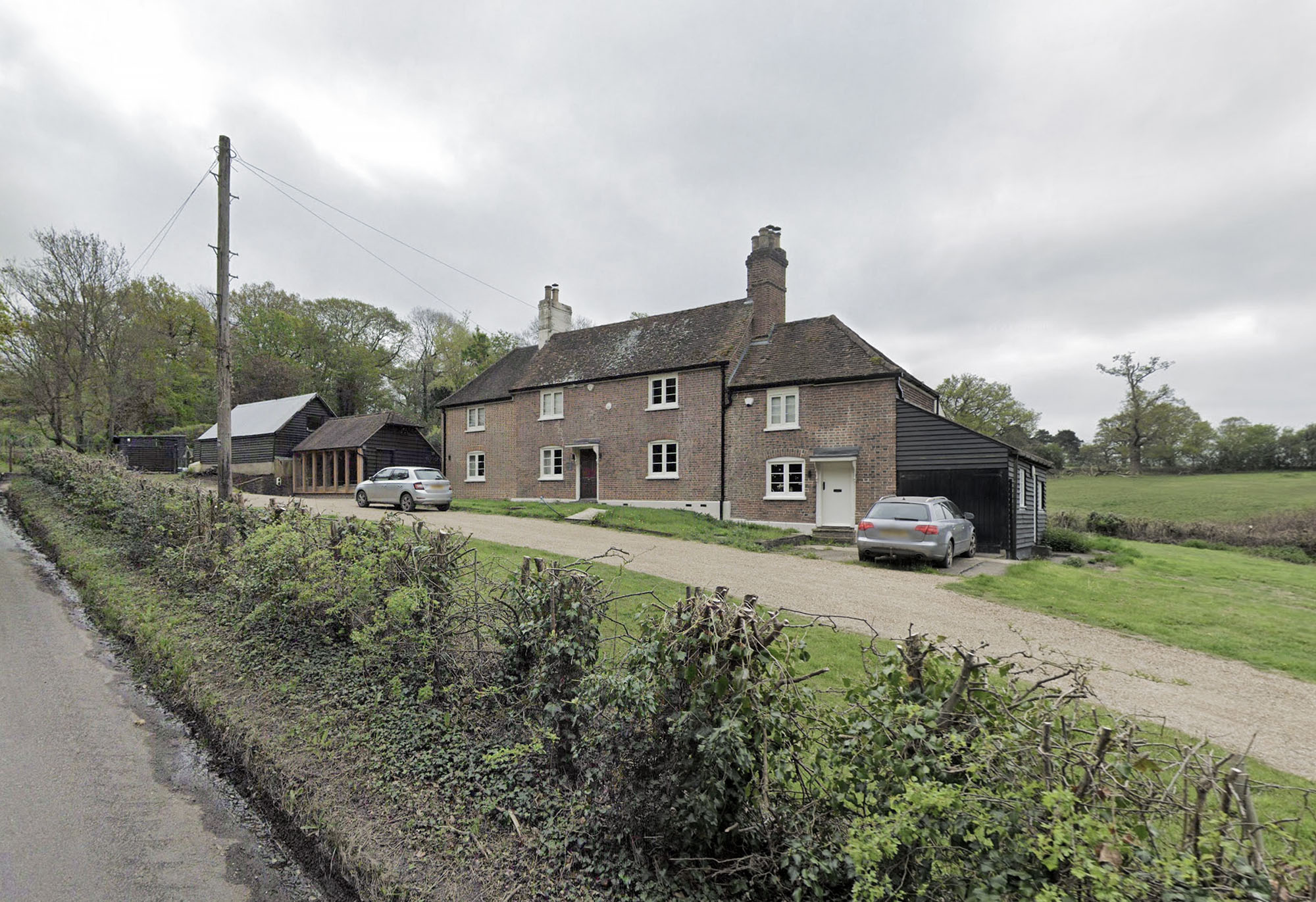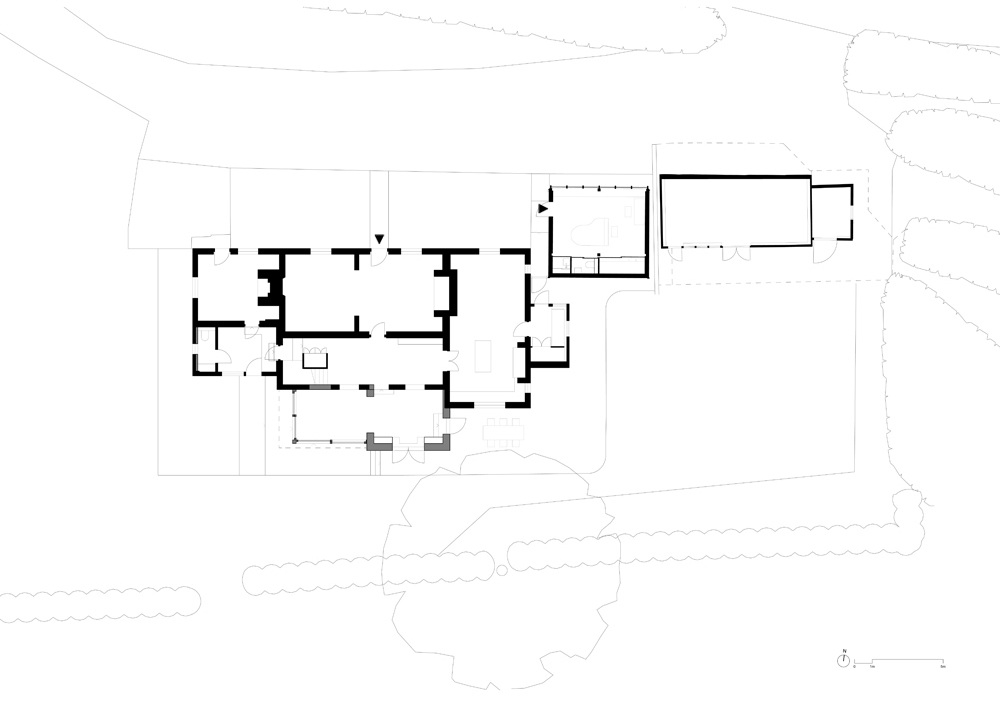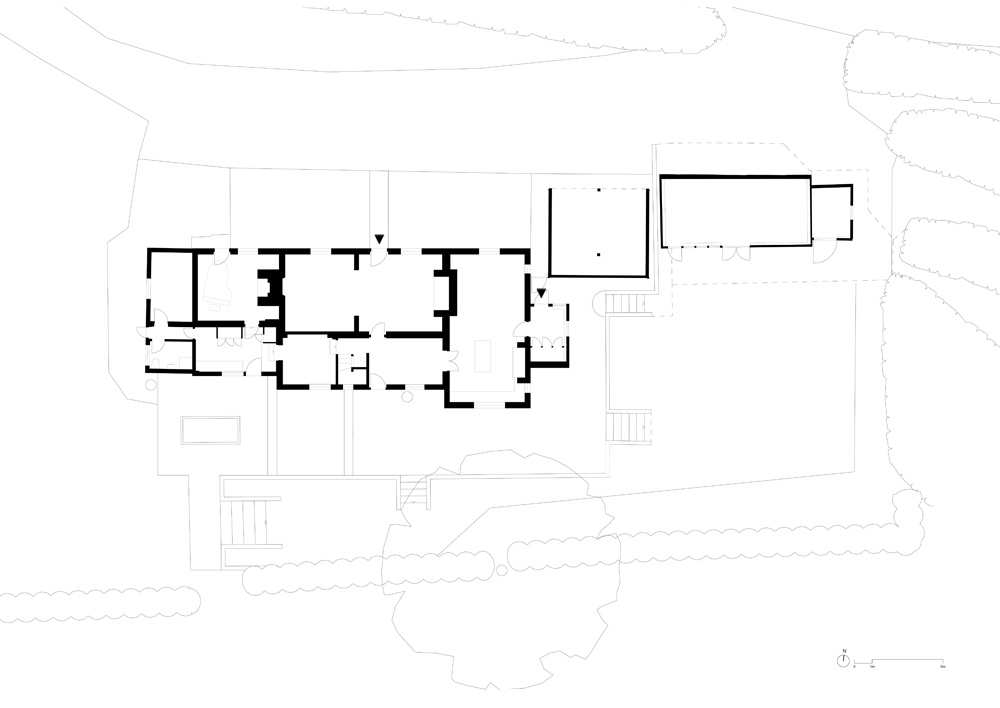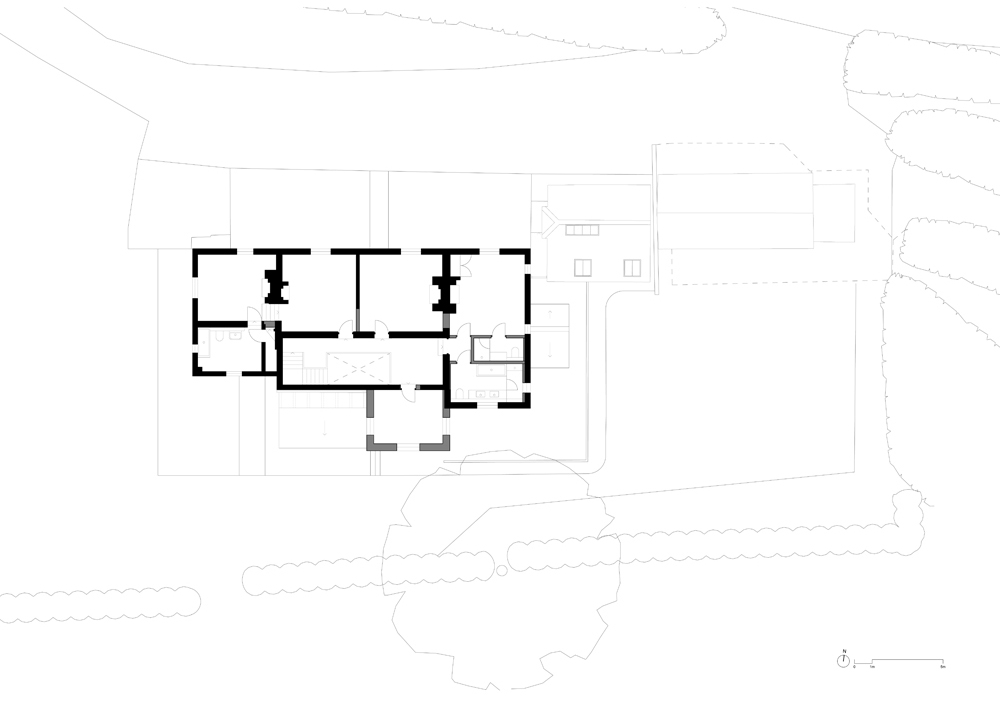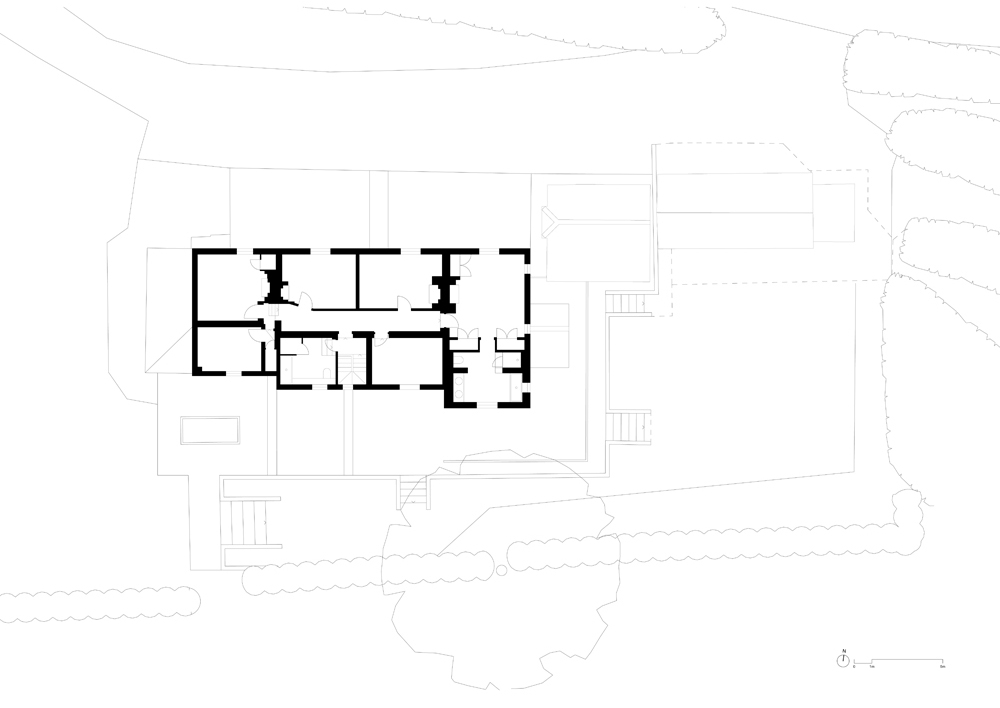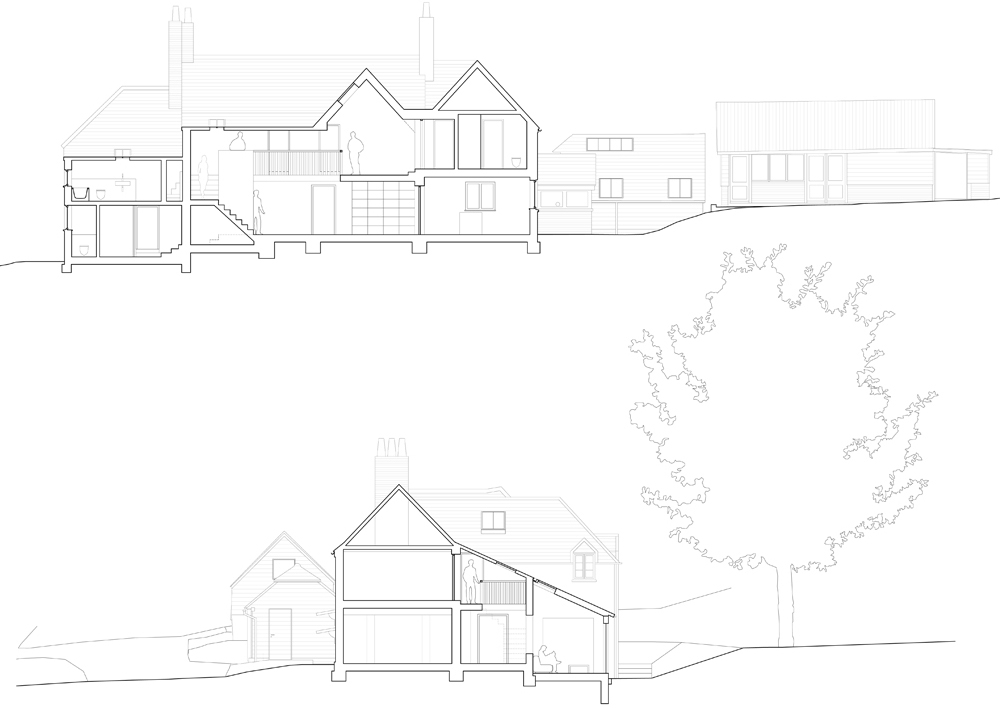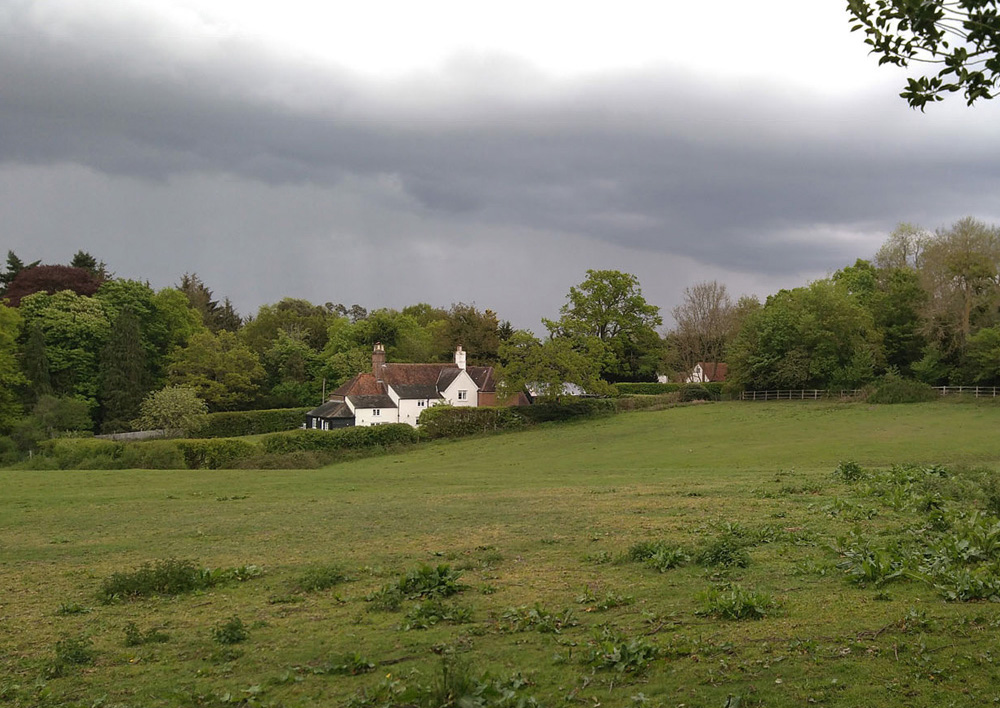
Hill House
Conversion and Extension of a Grade II Listed Cottage near Hatfield, Hertfordshire
We have received Planning Approval and Listed Building Consent for the careful interior reconfiguration and extension of this cottage and the conversion of an existing oak frame outbuilding into a music rehearsal room.
The Hill House property lies within the hamlet of Wildhill which is part of the historic parish of Bishop’s Hatfield. It comprises a Grade II listed main house and a series of modern timber outbuildings. Hill House is a two-storey brick building, dating substantially from 1762. The house preserves within it significant remains from two ‘semi-detached’ 18th century cottages. It has been modified on several occasions, including the latest major extension in 2005 to the eastern end of the house. Previous changes to the floor and ceiling levels have resulted in awkward steps and damp problems.
The main objective of our proposals is to address a tight and dark first floor layout and the general lack of communal space for the clients' family with views and direct access to the south- and west facing garden. Our design addresses shortcomings of a previously approved planning application in tackling the stepping floors, ceilings and damp issues, both in relation to the overall quality of the living spaces and in the response to the historic asset.
A completely revised circulation proposal aims at reinstating the historic layout of the front-facing bedrooms and at making the former rear-facing scullery legible as one unified space forming a day-lit circulation and communication hub for the family. This central double height space will be the future 'heart’ of the house from where all bedrooms and existing and proposed new living spaces are accessed and integrated.
The previously approved, but now redesigned, two-storey rear extension, replacing the poor-quality gable from 2004, and the new single-storey garden room with mono-pitched roof are fitted to complement the historic building in a sympathetic way. Although the rear extension is not visible from the public road, the design has nevertheless considered all relevant views from the surrounding landscape. The removal of the modern western timber extension and introduction of several new windows will have a positive effect on the appearance of the house, both in terms of scale and materiality.
The project is currently at tender stage.
Hill House
Conversion and Extension of a Grade II Listed Cottage near Hatfield, Hertfordshire
We have received Planning Approval and Listed Building Consent for the careful interior reconfiguration and extension of this cottage and the conversion of an existing oak frame outbuilding into a music rehearsal room.
The Hill House property lies within the hamlet of Wildhill which is part of the historic parish of Bishop’s Hatfield. It comprises a Grade II listed main house and a series of modern timber outbuildings. Hill House is a two-storey brick building, dating substantially from 1762. The house preserves within it significant remains from two ‘semi-detached’ 18th century cottages. It has been modified on several occasions, including the latest major extension in 2005 to the eastern end of the house. Previous changes to the floor and ceiling levels have resulted in awkward steps and damp problems.
The main objective of our proposals is to address a tight and dark first floor layout and the general lack of communal space for the clients' family with views and direct access to the south- and west facing garden. Our design addresses shortcomings of a previously approved planning application in tackling the stepping floors, ceilings and damp issues, both in relation to the overall quality of the living spaces and in the response to the historic asset.
A completely revised circulation proposal aims at reinstating the historic layout of the front-facing bedrooms and at making the former rear-facing scullery legible as one unified space forming a day-lit circulation and communication hub for the family. This central double height space will be the future 'heart’ of the house from where all bedrooms and existing and proposed new living spaces are accessed and integrated.
The previously approved, but now redesigned, two-storey rear extension, replacing the poor-quality gable from 2004, and the new single-storey garden room with mono-pitched roof are fitted to complement the historic building in a sympathetic way. Although the rear extension is not visible from the public road, the design has nevertheless considered all relevant views from the surrounding landscape. The removal of the modern western timber extension and introduction of several new windows will have a positive effect on the appearance of the house, both in terms of scale and materiality.
The project is currently at tender stage.
More projects
Get in touch
